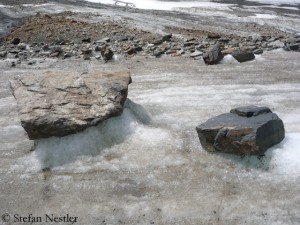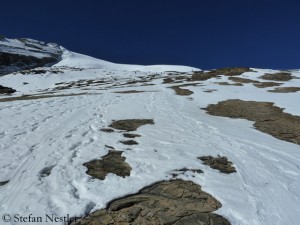More than 600 glaciers have already disappeared
Better safe than sorry, this also applies for public relations. Three years ago the IPCC slipped on the ice of the Himalayan glaciers. In its last report on climate change that was published in 2007 it was predicted that all Himalayan glaciers would have disappeared until 2035. In 2010 the IPCC had to concede tranposed digits, the right year in the prediction should have been 2350. There was a flood of criticism. No wonder that in the summary of the new climate report the word “Himalaya” is missing. The IPCC only announced that “over the last two decades (…) glaciers have continued to shrink almost worldwide”. Also in the full report, which is more than 2,000 pages long, the IPCC is only making cautious predictions for the Himalayas.
Forecasts for the Himalayas are difficult
“The Karakoram-Himalaya mountain range, for instance, has a large variety of glacier types and climatic conditions, and glacier characteristics are still only poorly known”, says the report. “This makes determining their future evolution particularly uncertain.” While studies showed that glaciers in the Himalayas and Hindukush had been losing mass, those in the Karakoram were close to balance. There were even glaciers in the Karakoram and also on the coasts of New Zealand, Norway and Southern Patagonia that advanced – as the result of special topographic and/or climate conditions (e.g., increased precipitation). “More glaciers will disappear, others will lose most of their low-lying portions, and others might not change substantially”, says the IPCC.
Some mountains become glacier-free zone
But there cannot be given an all-clear. Quite the contrary. According to the IPCC many glaciers are threatened: More than 600 have already disappeared in the Canadian Arctic and Rocky Mountains, the Andes, Patagonia, the European Alps, the Tien Shan and elsewhere. In these regions, more than 600 glaciers have disappeared over the past decades. “It is also likely that some mountain ranges will lose most, if not all, of their glaciers.”
Hundreds of millions of people might be affected
Even before the publication of the new climate report IPCC chief Rachendra Pachauri had pointed out that the situation in the Himalayas remained critical: “The mistake we made was using that figure of 2035, but that doesn’t in any way reduce the implications of glacier melt across the entire Himalayan rang and that’s something to be concerned about.” Even before 2035 it was going to shart showing up in term of chances in water flows, said Pauchauri. Estimated 500 million people in South Asia and 250 million in China might be affected.
Compared to that, the consequences for mountaineers would be unimportant. Nevertheless climbers have to expect more rocky passages and more rock fall on the world’s highest mountains. And extreme weather events, which are probably more likely if the world’s climate as expected will become warmer.






